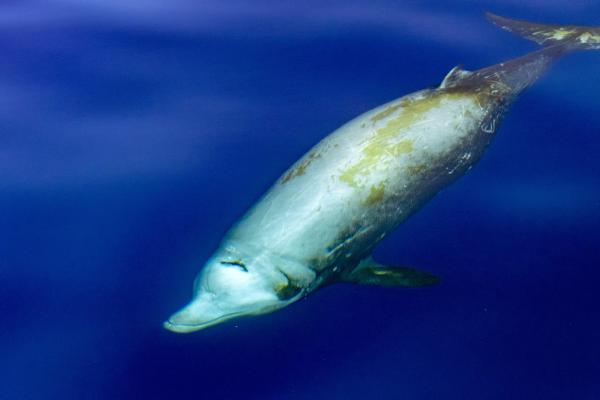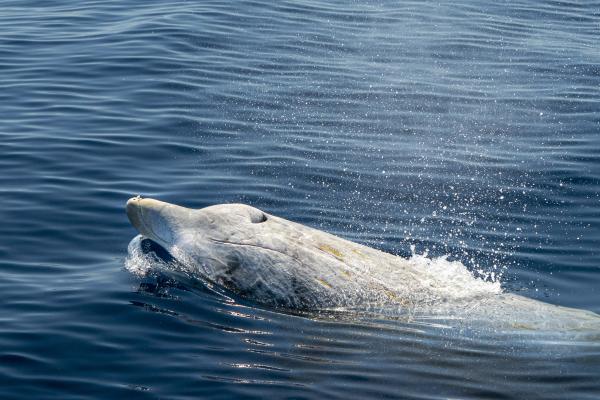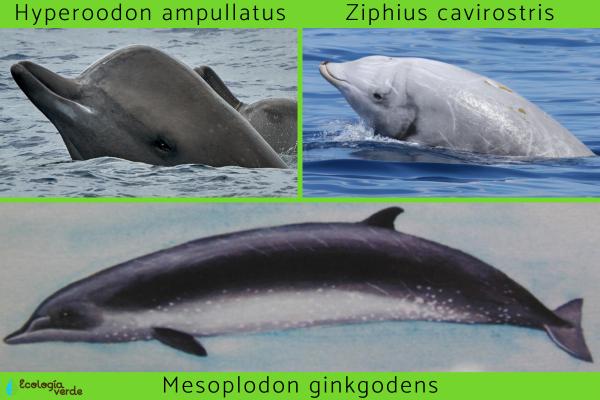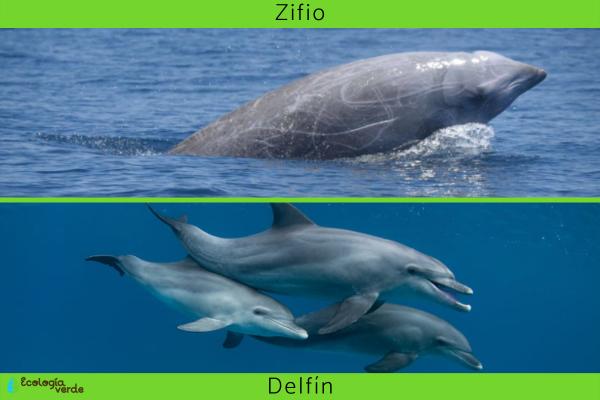The deep ocean remains one of the least explored regions on Earth, hiding many elusive marine species. Among them is the beaked whale, a creature that resembles a dolphin but is in fact a unique type of whale. These shy and mysterious mammals are among the least understood cetaceans due to their deep-sea lifestyle and elusive nature.
In this article, we’ll explain what beaked whales are, their main characteristics, species, habitats, diet, and how they differ from their more familiar cousins—dolphins.

Beaked whales are toothed whales (odontocetes) that belong to a specialized group within the cetacean family. They’re also called bottle-nosed whales or long-snouted whales because of their elongated beak-like snouts. Their dolphin-like shape can be misleading, but beaked whales are distinct in many ways.
Streamlined, crescent-shaped body with a long beak, small dorsal fin, pectoral fins, and fluke.
Medium to large size, ranging from 4 to 15 meters (13 to 50 feet) in length, weighing up to 17 tons.
Minimal teeth: Most species have only 1–2 visible tusks, found only in males and used for combat. These tusks protrude from the lower jaw. The rest of the teeth are vestigial and remain buried in the gums—non-functional for feeding.
Large, domed forehead, which houses a melon—a specialized organ used for echolocation. This allows them to emit and receive sound waves to locate prey in dark, deep waters.
Two throat grooves, aiding in mouth expansion and suction feeding.
Breathe air through a blowhole located toward the back, allowing them to surface without fully emerging. They typically exhale every 40 seconds while at the surface.
Incredibly shy and elusive animals, rarely seen alive.

Beaked whales are classified into six primary genera, with about 24 recognized species. However, most of these species are rarely observed and known primarily through stranded specimens or skeletal remains.
Hyperoodon
Mesoplodon
Ziphius
Tasmacetus
Indopacetus
Berardius
Found in cold North Atlantic waters, this species can dive up to 1,453 meters (4,767 feet) for over 70 minutes. Weighing up to 8 tons and living up to 37 years, they are generally solitary or form small pods of up to 10 individuals.
One of the most widespread beaked whale species, Cuvier’s beaked whale is found in all oceans except the Arctic. It prefers deep, cold water and is named after paleontologist Georges Cuvier. It averages 6.5 meters (21 feet) in length. Males have 8 cm tusks, and all individuals possess up to 40 non-erupting vestigial teeth.
Measuring 4–5 meters (13–16 feet), this rare species lives in warm waters of the Pacific and Indian Oceans. Its name comes from the triangular, ginkgo leaf-shaped tusks of the males. Most information comes from stranded individuals.

Beaked whales are deep-diving specialists, known to reach depths of 1,000 meters (3,280 feet) or more. In fact, they are among the deepest-diving mammals on the planet.
Cosmopolitan distribution: Unlike many whales, beaked whales live in tropical, temperate, and polar regions.
Prefer open-ocean habitats, typically 300 meters (1,000 feet) deep or more.
Often found near continental slopes, submarine canyons, and seamounts.
Their deep-sea habitat makes them extremely difficult to study in the wild.
Beaked whales are strict carnivores that rely on echolocation to hunt in the pitch-black depths of the ocean. Their diet primarily includes:
Deep-sea fish
Crustaceans, such as shrimp and crabs
Mollusks, especially cephalopods like squid and octopus
Since they lack functional teeth, they feed by suction—drawing prey into their mouths using negative pressure. They often feed near or on the benthic (seafloor) and bathypelagic zones.
Although both beaked whales and dolphins are toothed cetaceans, they differ in several fundamental ways:
| Feature | Beaked Whales | Dolphins |
|---|---|---|
| Teeth | Males have 1–2 visible tusks; others vestigial | 60–100 functional teeth in both sexes |
| Feeding | Use suction to ingest prey | Catch and bite prey using teeth |
| Sociability | Shy and elusive | Social, playful, often interact with humans |
| Habitat Depth | Prefer deep ocean waters | Prefer shallow coastal areas |
| Geographic Range | Found worldwide, including polar regions | Primarily found in warm, temperate waters |

Beaked whales are among the most mysterious and least understood marine mammals on Earth. Their deep-diving ability, secretive behavior, and unique physical traits make them fascinating subjects of marine biology. While they may resemble dolphins at first glance, beaked whales lead a vastly different life—quiet, hidden, and adapted to the dark depths of the sea.
Want to learn more about whales, dolphins, and other marine mammals? Explore our [Wild Animals] section to discover more ocean wonders!
Bibliography
Lambert, O., De Muizon, C., & Bianucci, G. (2013). The most basal beaked whaleNinoziphius platyrostris Muizon, 1983: clues on the evolutionary history of the family Ziphiidae (Cetacea: Odontoceti). Zoological Journal of the Linnean Society, 167(4), 569-598.
Rodriguez-Fonseca, J. (2001). Diversity and distribution of the cetaceans of Costa Rica (Cetaceae: Delphinidae, Physeteridae, Ziphiidae and Balaenopteridae). Journal of Tropical Biology, 135-143.
Hooker, S. K., & Baird, R. W. (1999). Deep–diving behavior of the northern bottlenose whale, Hyperoodon ampullatus (Cetacea: Ziphiidae). Proceedings of the Royal Society of London. Series B: Biological Sciences, 266(1420), 671-676.
National Oceanic and Atmospheric Administration (s.f.) Northern Bottlenose Whale. Available at: https://www.fisheries.noaa.gov/species/northern-bottlenose-whale
Lundrigan, B. and A. Myers (2000) Ziphius cavirostris. Available at: https://animaldiversity.org/accounts/Ziphius_cavirostris/
animal tags: Beaked Whales
We created this article in conjunction with AI technology, then made sure it was fact-checked and edited by a Animals Top editor.